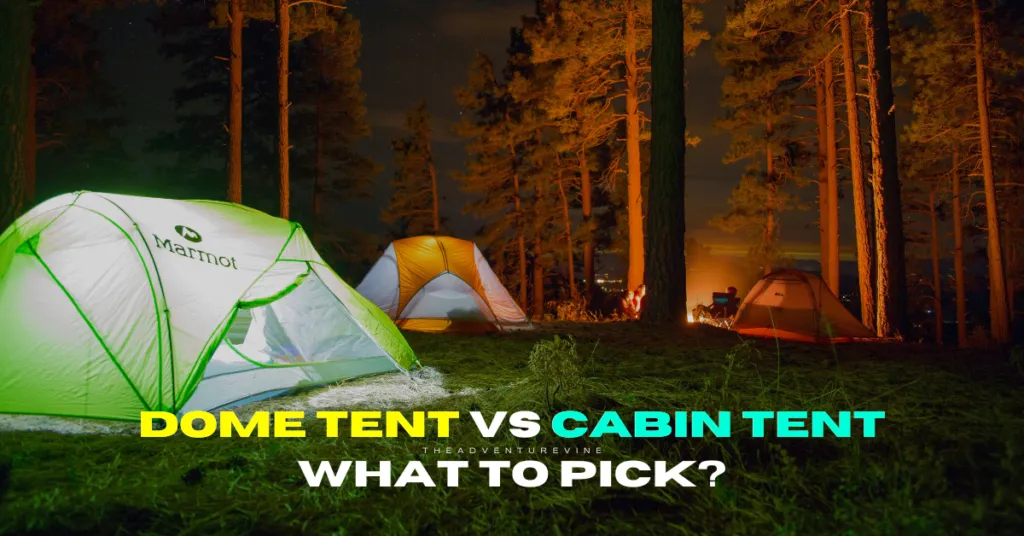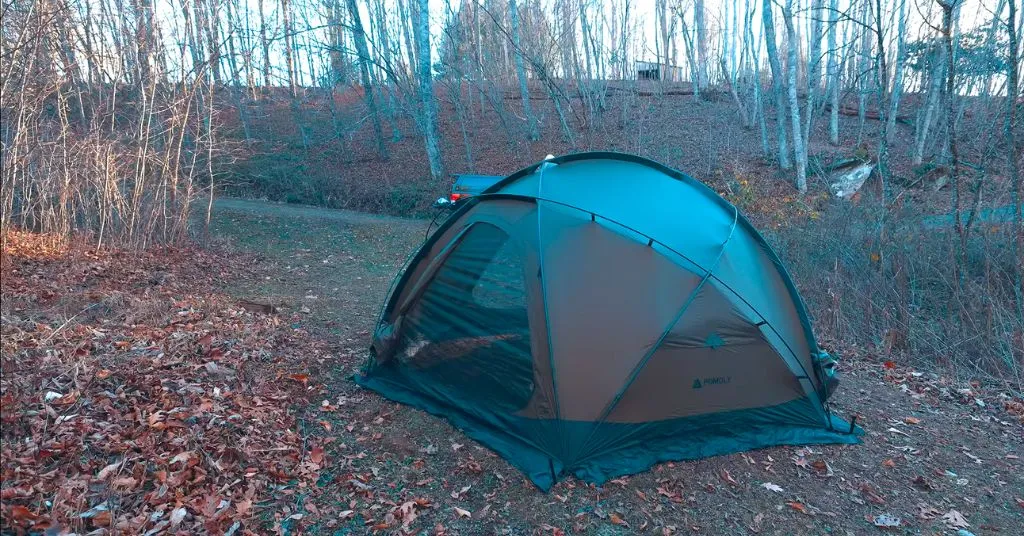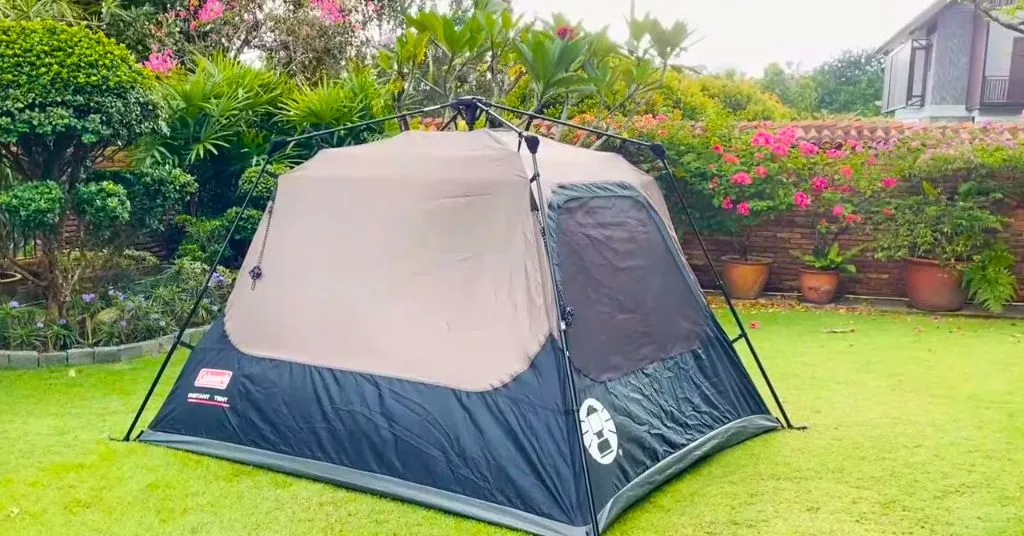
Choosing between a Dome tent vs Cabin tent is a crucial decision. Dome tents and cabin tents are two common options, each with its own set of features and benefits.
In this comprehensive guide, we will delve into the distinctions between dome and cabin tents, exploring their structures, advantages, disadvantages, and suitability for various camping scenarios.
What is a Dome Tent

Definition and Structure
A dome tent is characterized by its arched pole structure, resembling the shape of a dome found on top of stadiums. These tents are compact and designed to withstand adverse weather conditions due to their curved structure.
Dome tents come in various sizes and are particularly favored by backpackers and hikers for their lightweight nature and easy setup.
Advantages and Disadvantages
Dome tents boast stability, aerodynamics, and a rainfly that extends to the ground, providing a vestibule for additional storage or cooking space. However, they may lack the headroom and floor space found in cabin tents, and their smaller windows and doors offer less ventilation and natural light.
What is a Cabin Tent

Definition and Structure
A cabin tent has almost vertical walls, offering a rectangular or square footprint akin to a cabin. Cabin tents are larger and taller, accommodating varying numbers of campers. They may be constructed from different materials, providing a range of weights, durability, and weather resistance.
Many cabin tents include awnings and even fully screened patio areas for enhanced comfort.
Advantages and Disadvantages
Cabin tents excel in spaciousness, comfort, and ventilation, with larger windows and doors providing ample natural light. However, they tend to be heavier and bulkier, making transportation and setup more challenging.
The rainflies on cabin tents may not cover the entire structure, leaving some parts exposed to the elements.
Cabin Tent vs Dome Tent
Comparison Table
| Feature | Cabin Tent | Dome Tent |
|---|---|---|
| Size and Capacity | Larger and taller, accommodating more people | Smaller and lower, suitable for fewer occupants |
| Weight and Portability | Heavier and bulkier, challenging to transport | Lighter and more compact, easier to transport |
| Stability and Aerodynamics | Less stable and aerodynamic, susceptible to winds | More stable and aerodynamic, resistant to winds |
| Weather Resistance | Less weather-resistant, partial rainfly coverage | More weather-resistant, full rainfly coverage |
| Ventilation and Brightness | More ventilated with larger windows and doors | Less ventilated with smaller windows and doors |
| Features and Amenities | More features, internal partitions, windows, awnings | Fewer features, lacks internal partitions, windows |
Tips and Recommendations
The choice between a cabin tent and a dome tent depends on personal preferences, budget, and camping style. Cabin tents suit those seeking spaciousness and comfort, while dome tents cater to lightweight, easy setups, and weather resilience.
Consider factors such as size, weight, material, and design when making your decision. Read reviews, test the tent beforehand, and follow manufacturer instructions for optimal use and maintenance.
Which Tent To Buy?
Summary and Answer
In summary, the decision between a dome tent and a cabin tent hinges on your camping preferences. While dome tents are better in portability and weather resistance, cabin tents offer superior comfort and space.
For most campers, especially beginners and families, we recommend a cabin tent for its overall versatility, providing a more enjoyable camping experience with added features and amenities.
Final Thoughts
In conclusion, whether you opt for a dome tent or a cabin tent, your choice should align with your camping style, preferences, and specific requirements. By understanding the pros and cons of each type, you can make an informed decision that enhances your outdoor experience.
Thank you for taking the time to explore the Dome Tent Vs Cabin Tent guide. If you have any questions or would like to share your camping experiences, feel free to leave a comment below.
Frequently Asked Questions
Is a dome tent better than a cabin tent for camping?
The answer largely depends on your specific camping needs. Dome tents are often favored by backpackers due to their light weight, ease of setup, and wind-resistant design. Cabin tents, however, offer more vertical space and can be more comfortable for longer stays or larger groups.
What kind of tent is easier to set up, a dome or a cabin tent?
Generally, dome tents are easier and quicker to set up due to their straightforward design. However, with a bit of practice, setting up a cabin tent can also become quite manageable.
Which is better for wind resistance, a dome tent or a cabin tent?
Dome tents are often more wind-resistant due to their aerodynamic shape that deflects wind from all sides, reducing the risk of the tent being blown over. In contrast, cabin tents, with their tall and flat sides, can be more susceptible to strong winds.
Which type of tent is more spacious, a dome or a cabin?
Cabin tents usually offer more living space due to their vertical walls and high peak height. Dome tents, while spacious, have sloping walls that can limit the usable space, particularly for taller individuals or large groups.
Can I stand up inside a dome tent?
Depending on the specific model and size of the dome tent, you may or may not be able to stand up inside. Cabin tents, due to their high peak height and vertical walls, generally allow for a full-standing room.
